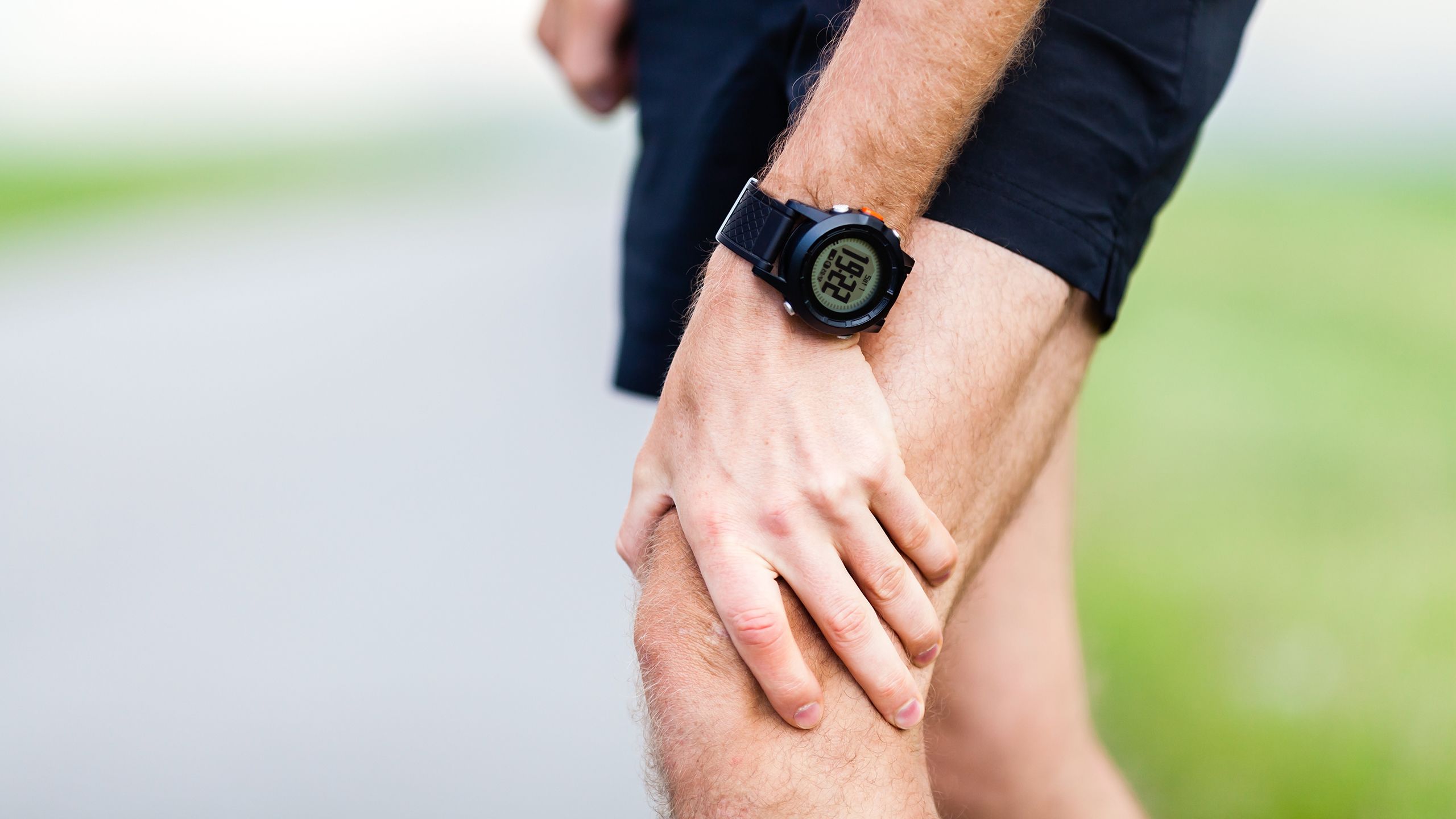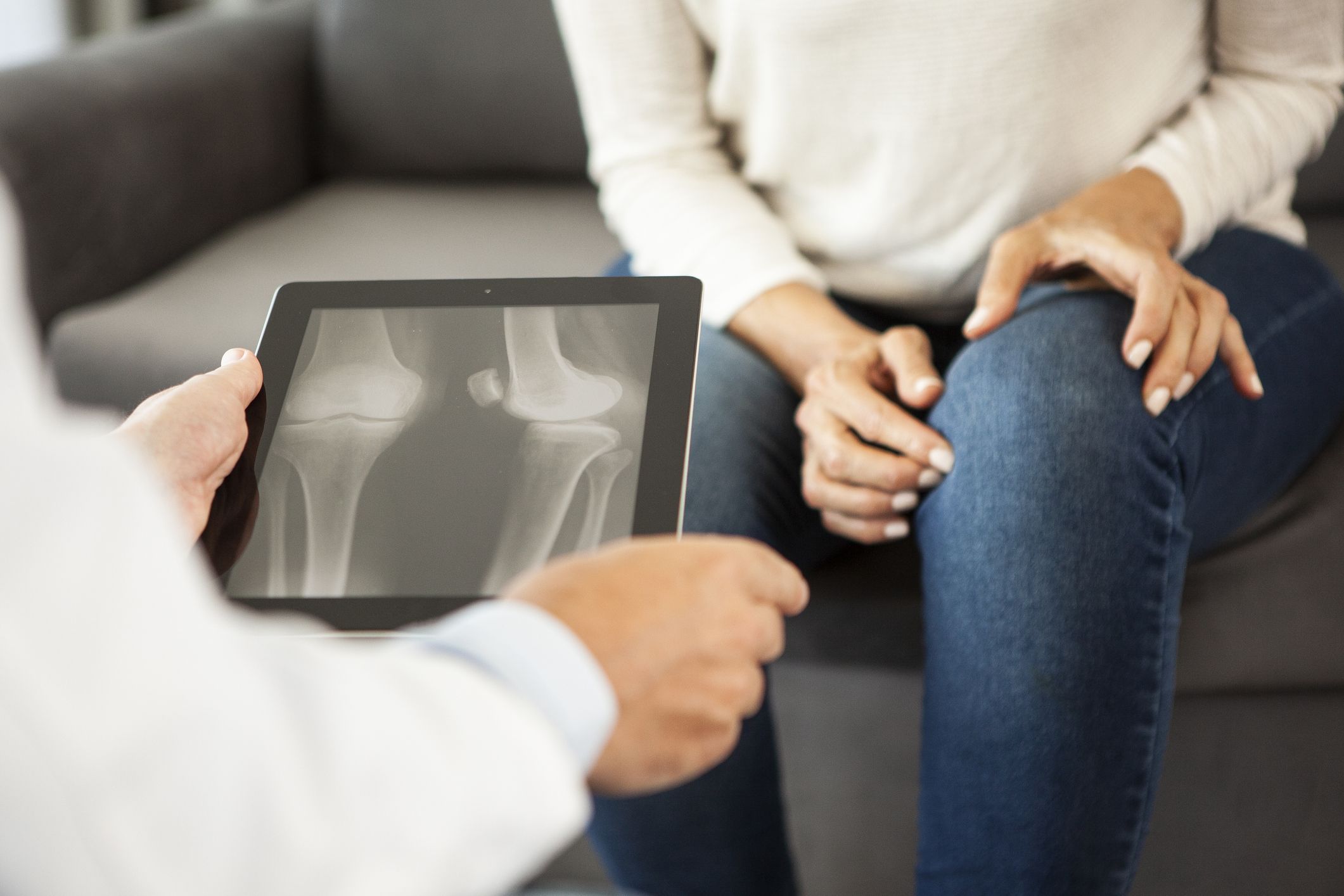Have you recently been diagnosed with knee osteoarthritis? If so, you’re probably wondering if you did something to cause this progressive joint disease, which involves the breakdown of the cartilage and connective tissue in the knee.
Though some risk factors are outside your control, such as aging and genetics, others are not. Understanding what causes arthritis in the knee may help you find relief from pain, stiffness and instability.
Genetics
Osteoarthritis used to be considered a disease of wear and tear on a joint. Now, doctors understand that multiple factors are at play, including genes. Even after taking into account age, sex, weight and environmental factors, at least 30 percent of the risk of osteoarthritis is determined by your genes.
In normal, healthy joints, there’s a balance between the breakdown of old tissue and the buildup of new tissue. In a joint with osteoarthritis, however, there’s more breakdown than buildup. Many genes play a role in this process of forming and maintaining joint bone and cartilage.
Your genes also interact with your environment. For example, if you’ve experienced a physical trauma to the knee, your genetic makeup may increase your susceptibility to developing osteoarthritis.
Being female
Roughly 42 percent of women 65 and older have symptoms of knee osteoarthritis, compared to 31 percent of men in the same age group. The reasons for this difference are not entirely clear. Women also tend to have more severe osteoarthritis when it’s in the knee compared to other joints typically affected by osteoarthritis.
As women age, levels of estrogen decrease, which may partly explain why the prevalence of osteoarthritis of the knee and hip is higher in women in general and especially in women over 55. Estrogen appears to have a protective effect on cartilage, and loss of estrogen is associated with a loss of muscle mass. Diminished quadriceps muscles (those in the front of the leg) may increase the risk of osteoarthritis in the knee.
Body weight may also enhance the role played by gender. Knee osteoarthritis develops earlier than other types of osteoarthritis, particularly in younger women who are obese.
Obesity
Osteoarthritis is becoming more prevalent in men and women in their 40s and 50s. This corresponds to rising rates of obesity in this age group. Obesity is a primary knee arthritis risk factor, in part because of the stress that excess weight puts on the knee joint. A general population study in Britain found that women who had the highest body mass index (BMI) were 6 times more likely to develop osteoarthritis in one knee and nearly 18 times more likely to develop it in both knees than women with the lowest BMI.
Excess fatty tissue also secretes compounds called adipocytokines that are associated with inflammation and may directly or indirectly affect the breakdown of joint tissue.
Inflammation
Inflammation is believed to be a culprit behind many diseases common in older adults, including arteriosclerosis (hardening of the arteries), periodontitis (gum disease), age-related macular degeneration (a leading cause of blindness) and Alzheimer’s disease.
Inflammation also seems to play a role in joint degeneration in people with osteoarthritis, particularly in those who’ve experienced joint trauma or overuse. Inflammation appears to show up in joints even before signs of osteoarthritis can be detected on imaging tests.
Knee injuries and joint stress
Traumatic injury is one of the leading causes of osteoarthritis of the knee, especially in younger adults, and accounts for about 12 percent of all cases. In a 2014 study published in the Open Access Journal of Sports Medicine of more than 1,300 adults over the age of 36, the risk for developing knee osteoarthritis in patients who sustained a knee injury was five times higher than in those without an injury.
Years of stress placed on the knee joint due to overuse—such as from repetitive movements including kneeling and squatting—may also lead to osteoarthritis. People in certain physically demanding occupations, including construction, agriculture and mining, are at increased risk.
Tick bites
A bite from a certain species of tick (Borrelia burgdorferi) could cause Lyme disease, which may lead to Lyme arthritis, a condition that causes joint swelling and pain in one or more joints, particularly the knee. The Centers for Disease Control and Prevention reports that of the approximately 30,000 cases of Lyme disease reported annually, arthritis is present in about one-third of them.
Other health conditions
Several other diseases have been associated with an increased risk of osteoarthritis. Rheumatoid arthritis, for example, is a serious autoimmune disease that affects joints and other organs. Acromegaly occurs when the pituitary gland produces too much growth hormone. Hereditary hemochromatosis (HH) is a genetic disease that changes how the body regulates iron absorption and which can cause excess iron to accumulate in organs and joints. Untreated, about 50 to 80 percent of patients with HH will also develop arthritis.






